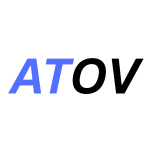1. Introduction – The IoT Revolution
The Internet of Things (IoT) is reshaping online business operations. Devices connected to the internet can now collect, exchange, and analyze data, allowing business owners to make smarter, faster decisions.
From inventory management to personalized customer experiences, IoT provides real-time insights that improve efficiency, reduce costs, and increase revenue.
2. What is the Internet of Things (IoT)?
IoT refers to a network of physical devices—such as sensors, smart appliances, and connected systems—that communicate via the internet.
Key features:
-
Connectivity: Devices communicate and share data
-
Automation: Processes are performed automatically
-
Real-Time Insights: Data is analyzed instantly
-
Scalability: Businesses can expand connected devices as needed
3. How IoT Works in Online Business
IoT systems use sensors, devices, and cloud platforms to monitor business operations.
Example Workflow:
-
A sensor in a warehouse monitors stock levels.
-
Data is sent to the cloud for analysis.
-
Alerts notify the business owner if inventory is low.
-
Automated systems reorder stock or adjust supply chain operations.
This process ensures smooth operations and minimizes errors.
4. Benefits of IoT for Online Business Owners
a) Real-Time Data and Analytics
IoT devices provide continuous data about customer behavior, product performance, and sales trends, helping business owners make data-driven decisions.
b) Inventory & Supply Chain Management
Sensors and connected systems monitor inventory levels, shipments, and warehouse conditions, reducing stockouts, overstock, and delays.
c) Enhanced Customer Experience
IoT devices track user interactions with products, enabling personalized recommendations, targeted offers, and better service.
Example: Smart shelves in retail monitor product interest and adjust pricing dynamically.
d) Automation and Efficiency
IoT automates repetitive tasks like inventory updates, shipment tracking, and notifications, freeing up time for strategic work.
5. Key IoT Applications for Online Businesses
a) Smart Inventory Management
-
Sensors track stock levels in real-time
-
Automatic reordering ensures products are always available
b) Connected Warehouses
-
Robots and automated guided vehicles (AGVs) handle products efficiently
-
Temperature and humidity sensors maintain product quality
c) Customer Behavior Tracking
-
IoT-enabled devices monitor website and app interactions
-
Data helps optimize product placement, promotions, and services
d) Smart Payment Systems
-
IoT devices like smart POS terminals and wearables facilitate secure, fast payments
-
Enables cashless transactions and seamless checkout experiences
e) IoT-Enabled Marketing
-
Personalized marketing campaigns based on real-time data
-
Push notifications triggered by user location, behavior, or preferences
6. Real-World Examples of IoT in Online Businesses
-
Amazon Go Stores – IoT sensors track products picked by customers, allowing checkout-free shopping.
-
Zara Smart Shelves – Monitors product availability and sends alerts for restocking.
-
FedEx SenseAware – IoT devices track shipments, temperature, and handling conditions.
-
Nest Smart Thermostats – E-commerce platforms offer connected smart home products for upselling.
-
Domino’s Pizza Tracker – IoT-enabled order tracking improves customer satisfaction.
7. Challenges of IoT Adoption
-
High Initial Costs – IoT infrastructure requires investment in devices and platforms
-
Security & Privacy Concerns – Connected devices can be hacked if not properly secured
-
Data Management – Handling and analyzing massive amounts of IoT data is challenging
-
Integration Issues – Combining IoT with existing systems can be complex
8. Steps to Implement IoT Solutions
-
Identify Business Needs – Focus on areas where IoT adds the most value
-
Choose the Right Devices – Sensors, wearables, POS systems, or smart shelves
-
Select a Cloud Platform – Ensure real-time data collection and analytics
-
Secure Your IoT Network – Use encryption, firewalls, and access controls
-
Train Employees – Teach staff how to use IoT devices effectively
-
Monitor and Optimize – Continuously evaluate performance and ROI
9. Future Trends in IoT for Online Business
-
AI and IoT Integration – Smarter analytics and predictive insights
-
5G Connectivity – Faster, more reliable IoT data transfer
-
Voice and IoT – Voice-activated devices for ordering, payments, and monitoring
-
IoT-Driven Personalization – Hyper-personalized shopping experiences
-
Edge Computing – Processing data closer to devices for faster response
10. Conclusion
IoT is transforming the way online businesses operate. From real-time inventory management to enhanced customer experiences, IoT provides tools that make operations faster, smarter, and more efficient.
Business owners who adopt IoT early gain:
-
Better control over operations
-
Improved customer satisfaction
-
Reduced costs and errors
-
A competitive advantage in the digital marketplace
The future of online business is connected, automated, and data-driven, powered by IoT technologies.
11. Charts & Infographics
Chart 1 – IoT Adoption in Online Businesses (2020–2025)
Chart 2 – Top IoT Applications for Online Business Owners
Chart 3 – Benefits of IoT for Online Businesses
